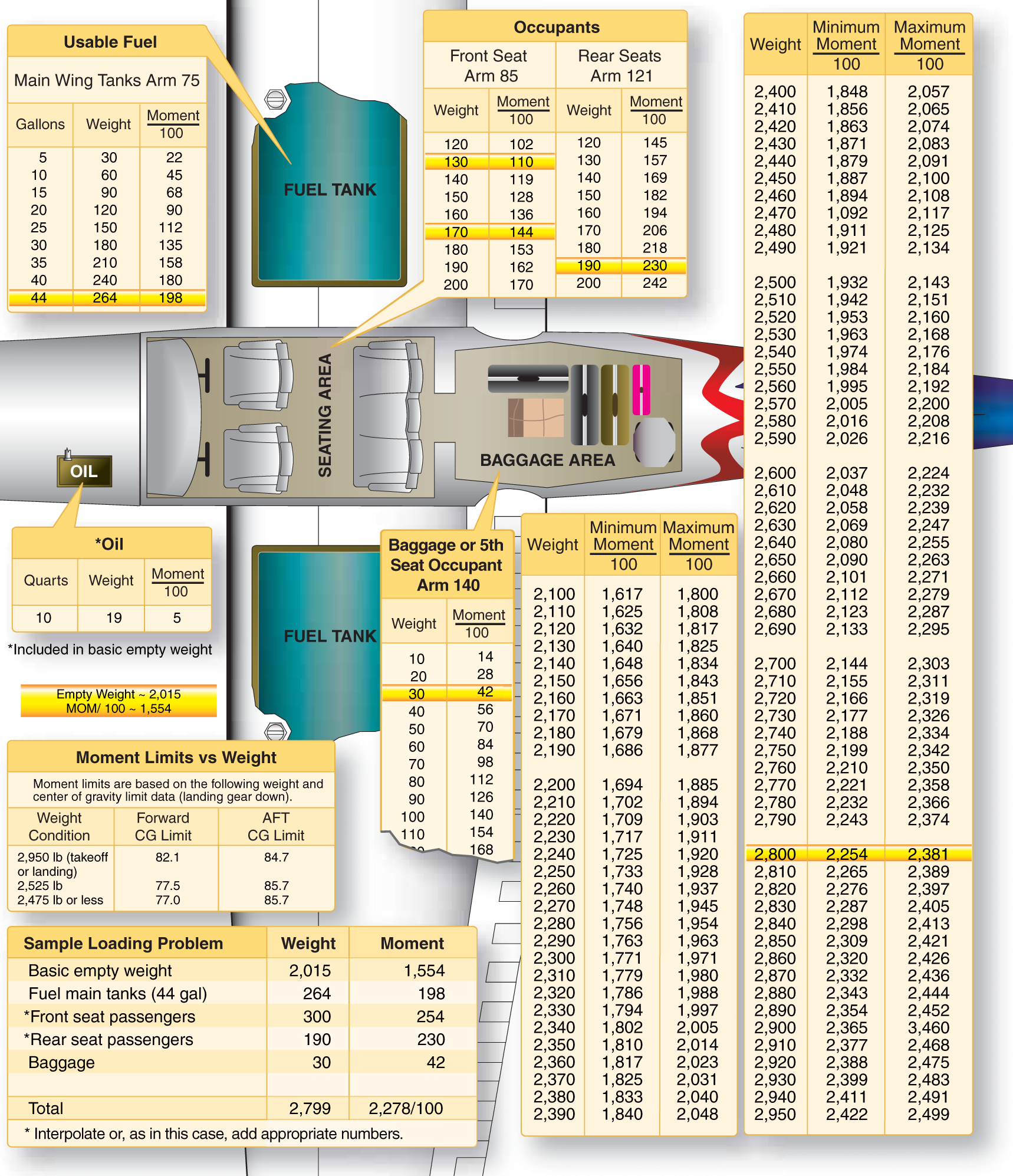Back in February, we introduced the concept of weight and balance and its significance in preflight planning. This week, we’ll look at one of the methods of determining your loaded weight and CG. There are a variety of methods to do this, but this week we’ll illustrate the table method with an example from the Pilot’s Handbook of Aeronautical Knowledge.
With the table method, the CG position is determined by dividing the total moments by the total weight. As weights are shifted around within the airplane by moving baggage from forward to aft compartments, moving passengers, or even extending and retracting the landing gear, the CG will follow. To avoid confusion, moments are often divided by 100, 1,000, or 10,000.
The figure below is an example of a table and a weight and balance calculation based on that table. In this problem, the total weight of 2,799 pounds and moment of 2,278/100 are within the limits of the table.






